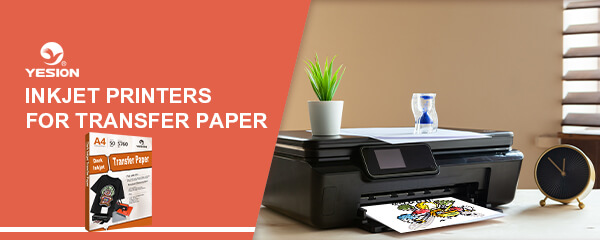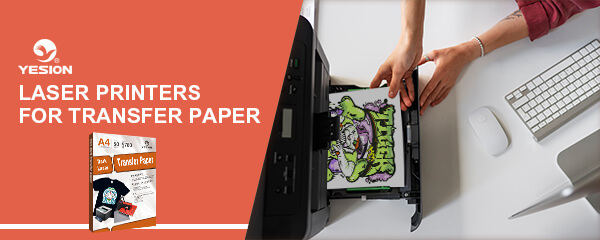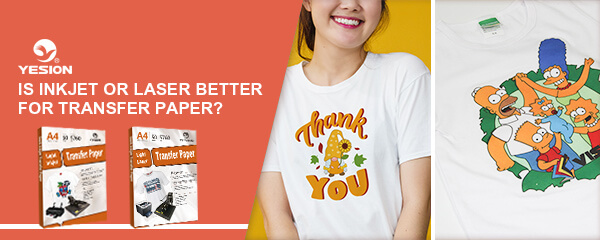
What happens if you print inkjet on laser transfer paper?
2024-01-19
Choosing the Right Transfer Paper for Laser Printers
2024-01-26Transfer paper plays a crucial role in various applications, allowing individuals to transfer images, designs, or text onto different surfaces.
Inkjet and laser printers are both commonly used for printing on transfer paper, but the choice between the two depends on various factors. Let’s explore the advantages and considerations of each type when it comes to printing on transfer paper.
Inkjet Printers for Transfer Paper
Inkjet printers are a popular choice for printing on transfer paper due to their versatility and ability to produce high-quality color prints. Here are some key points to consider:
Advantages of Inkjet Printers
Color Accuracy: Inkjet printers excel at reproducing vibrant colors and intricate details, making them ideal for printing designs, photographs, or graphics on transfer paper.
Compatibility: Inkjet printers are compatible with a wide range of transfer paper types, including both light and dark transfer papers, offering more flexibility in your printing options.

Inkjet Printers for Transfer Paper
Cost: Inkjet printers are generally more affordable than laser printers, making them a budget-friendly choice for individuals or small businesses.
Considerations for Inkjet Printers
Drying Time: Inkjet prints take longer to dry compared to laser prints. It is important to allow sufficient drying time before transferring the design onto fabric to prevent smudging or smearing.
Print Longevity: Inkjet prints may be susceptible to fading over time, especially when exposed to sunlight or washed frequently. To enhance the durability of inkjet prints, it is recommended to use high-quality transfer paper and follow proper washing and care instructions.
Laser Printers for Transfer Paper
Laser printers offer their own set of advantages when it comes to printing on transfer paper. Here are some key points to consider:
Advantages of Laser Printers
Speed and Efficiency: Laser printers are known for their fast printing speeds, making them suitable for high-volume printing. If you need to print multiple transfer designs quickly, a laser printer can be a great choice.

Laser Printers for Transfer Paper
Durability: Laser prints are generally more resistant to fading and smudging compared to inkjet prints. They are known for their longevity, making them a preferred choice for designs that require long-lasting durability.
Heat Resistance: Laser prints tend to have better heat resistance, which can be advantageous when using heat transfer methods that involve high temperatures.
Considerations for Laser Printers
Limited Color Range: While laser printers can produce high-quality prints, they may have limitations when it comes to color accuracy and reproducing complex color gradients. If your design requires precise color matching or intricate color details, an inkjet printer might be a better choice.
Compatibility with Transfer Paper: Laser printers are typically compatible with light transfer papers designed for laser printers. However, when it comes to dark transfer papers, special laser transfer papers or self-weeding papers may be required for optimal results.
Laser Dark Self-weeding Transfer Paper
When choosing between inkjet and laser printers for printing on transfer paper, it is important to consider your specific requirements, such as color accuracy, print longevity, budget, and printing volume. Additionally, it is recommended to follow the manufacturer’s instructions for both your printer and transfer paper to achieve the best results.
Whether you need inkjet transfer paper or laser transfer paper, please feel free to contact Yesion factory, we will provide you with high-quality products and services.

